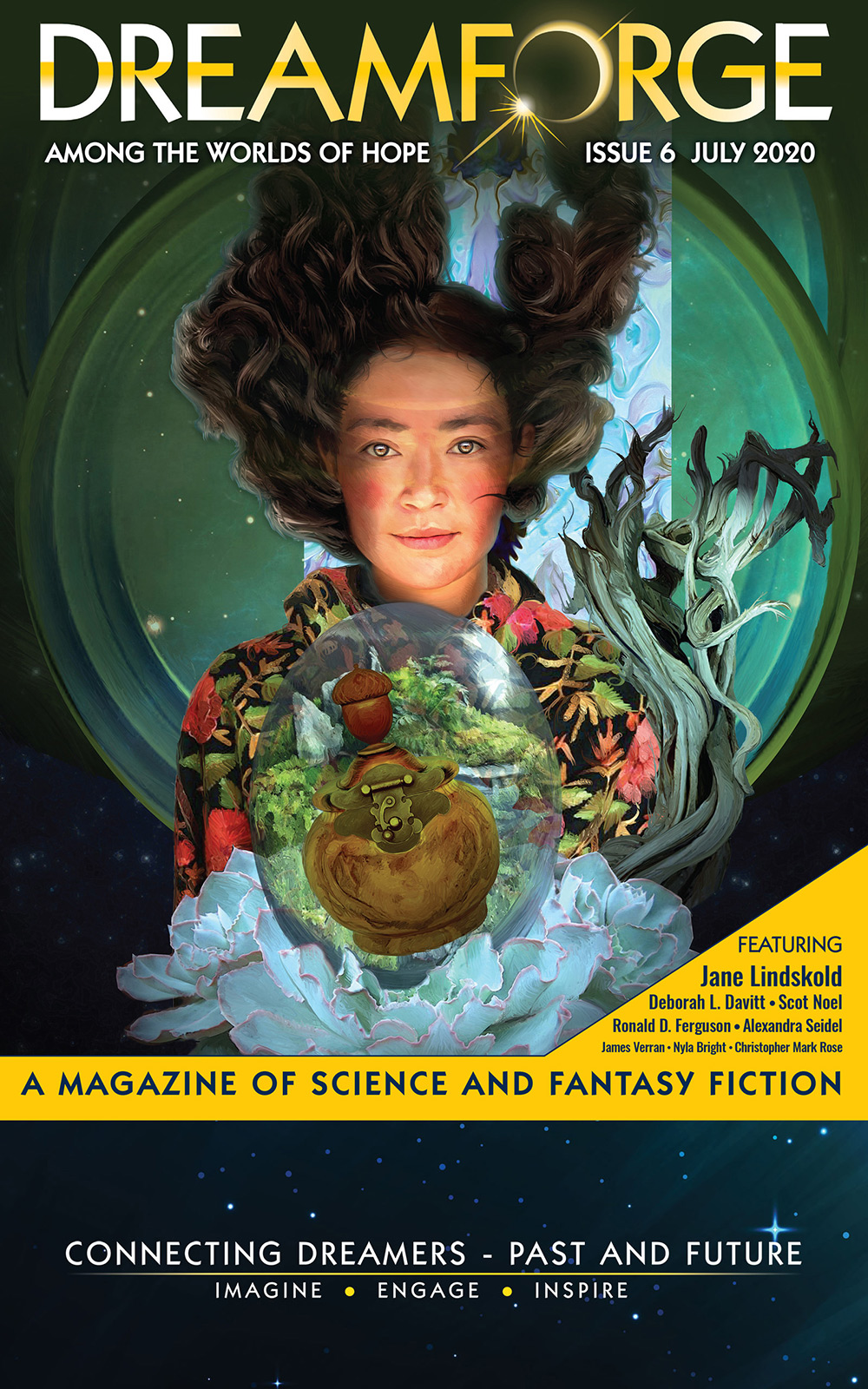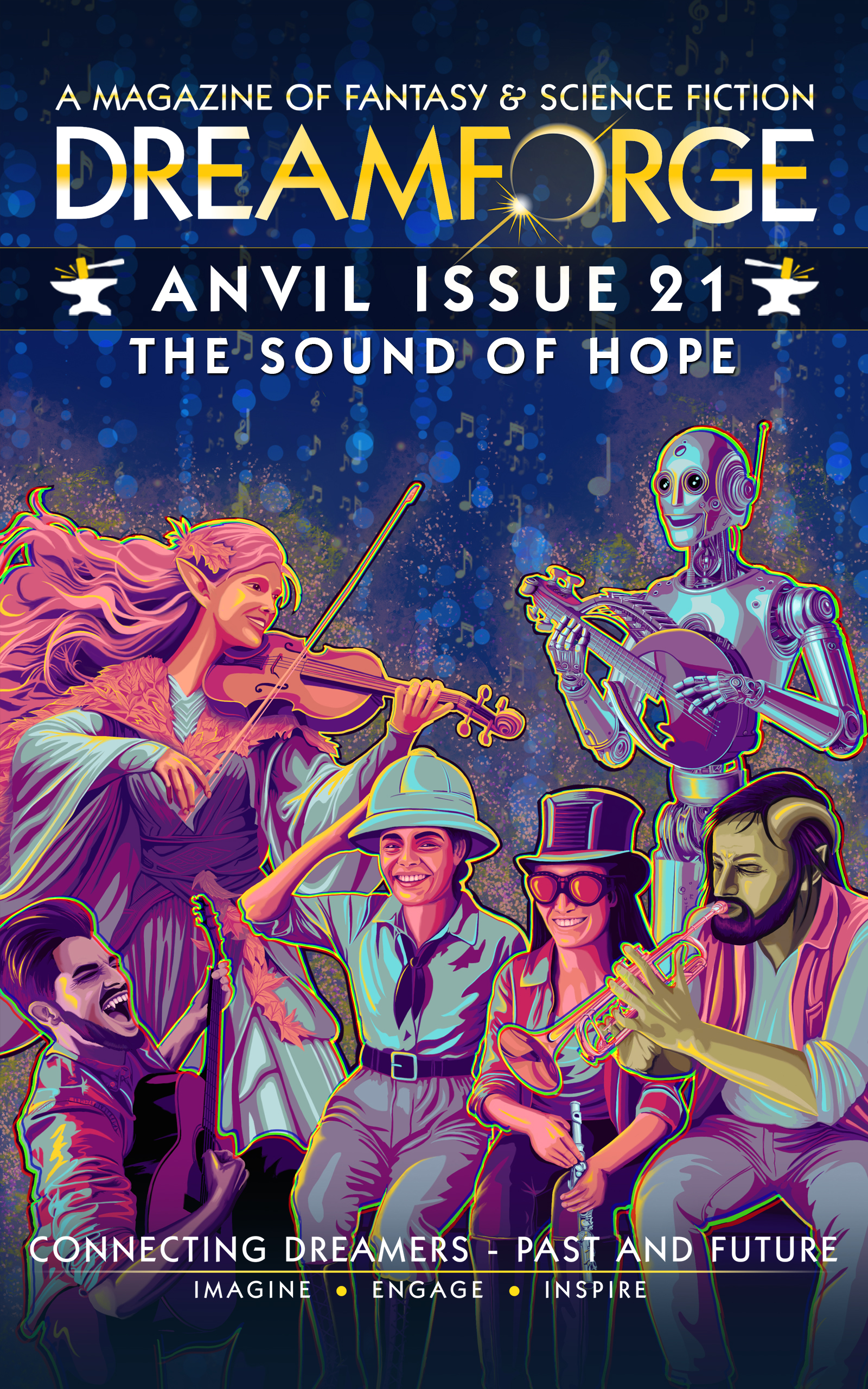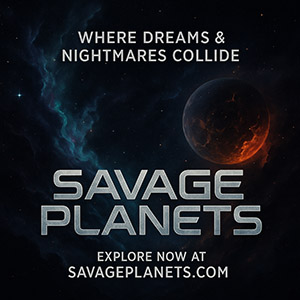What Should Endure
By Scot Noel
I write this editorial during the 2020 COVID-19 Pandemic along with a series of world-wide anti-racist protests sparked by the killing of George Floyd and continuing under the banner of Black Lives Matter.
The world is caught in a moment of chaos and fear, reactionary backlash and hopeful optimism. People are afraid for their lives and fighting for the shape of things to come.
The stresses of the moment have certainly affected our business, our families, our community, and our magazine. In our struggle to send this issue to print, the opportunity presented itself for me to work with Hugo Award Winning Illustrator Elizabeth Leggett as she designed our cover and I crafted a story to go with her art. Elizabeth chose Pandora’s Box as her theme, and I decided to go on an imaginative journey to find hope at the end of time.
My story “Pangenesis,” might not seem like a direct comment on our current trials and tribulations, but it is based in many of the following ideas:
This moment in history is exactly that, a moment. Centuries will come and go; millennia will pile on top of them. Everything will change, more drastically than you can possibly imagine. The only constant, if we make it our priority as we should, is humanity.
Politics will change. Nations will fall. Bedrock religions will disappear, to be supplanted by new beliefs the nature of which we cannot anticipate. Over time, those things would happen regardless, but If we maintain our current pace of technological and scientific advancement, the following developments, or something very like them, lie ahead:
Multiple, bio-engineered human species. The challenge of moving out into the solar system will demand it. New body forms. New senses. New sexes. Some adaptations will be practical to deal with low or high gravity, radiation or different food sources. Some will be for fun (because people are like that). Diversity will take on a whole new meaning.
Thinking, intelligent machines along with new bio-engineered, living minds will come along to share the universe with us. Once conscious, the machines will outpace our abilities almost instantly.
A world of robotic devices capable of replacing our entire production chain, from acquisition of resources to design, manufacture, construction, and repair. What new economies will rise in a world where human labor is ridiculously inefficient and unnecessary?
A network of minds is sure to develop, even though we have trouble today maintaining civility with mere tweets.
From fusion reactors to space-borne solar arrays, our descendants will command inconceivable energies compared to the puny consumption needs of today.
Resources to comfortably and equitably support trillions of humans both on and off-world.
Augmented reality, with half of what we see and feel being “real” in the sense we would understand it today and half being a kind of tangible “matrix” reality.
The ability to travel through space as coherent beams of light and to arrive on far distant worlds where previous robotic missions have created avatars for us to inhabit, artificial bodies suited to the environments where we have transmitted our minds.
Mere fanciful ideas? If you think so, you have both a limited sense of human achievement and an inadequate sense of time. In the long view, it’s not even likely we will concern ourselves with Earth-like planets. Our fascination with planets is a passing phase of our technological childhood. We will no more seek to live at the bottom of these troublesome gravity wells than today’s civilizations gravitate toward glaciers and the remnants of the ice-age conditions in which we lived for so long.
In the long future, what will it mean to be “free?” What form will justice take? How will we recognize truth from alternate facts? When it becomes possible for automated systems to supply for all human needs without human management, what forms of government will evolve?
All of this may give you visions of some inhuman dystopia. If so, imagine a Cro-Magnon woman of 15,000 years past plucked out of her house of Mammoth bones and deposited in New York’s Times Square today. No vision of hell her people might have conceived could possibly compare.
The only things that would comfort her are the things that always do. Empathy and humane kindness. The alleviation of suffering, hunger, and disease. The satisfaction of curiosity and the welcoming fellowship of others. It would be only with the greatest difficulty that our ancestor might come to grasp our values, religions, ideals, and politics. Not because of some limitation of the intellect (her brain would actually be a bit larger than ours), but because we —like her— live in a conceptual world of ideas, ideas to which we —mistakenly— often give more significance than to life itself. No predator is more threatening to any of us than one that might kill our preconceptions.
But life is what matters. And the values of life are ill-served by division and derision, tribal conflict and war, lies and propaganda. No matter what conceits you may harbor about this moment of time or your place in it, we are nowhere near history’s end. Another 15,000 years of human civilization will come and go easily enough. By the inexorable, unconquerable nature of time itself, we cannot pass on a legacy of 21st Century systems and beliefs, no matter how much we may cherish them, because they will be as meaningless to future generations as the right to own slaves or the Divine Right of Kings is to us today.
What can we pass on? What is our legacy? Well, we could teach our children that all who disagree with them or live differently than they do should be hated and scorned. That conflict is inevitable. That the truth of the future is the truth of the past, where the only good is the one Conan the Barbarian would recognize, to “crush your enemies, see them driven before you, and hear the lamentation of the women!”
Or not. The future, after all, has always been filled with hope, and up to all of us.












